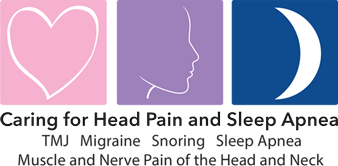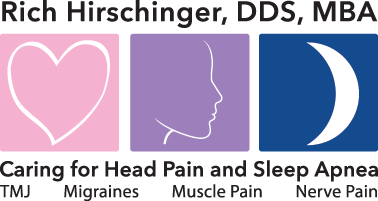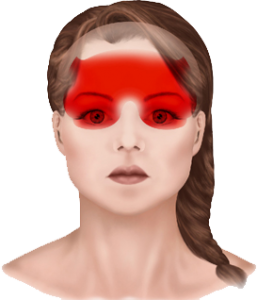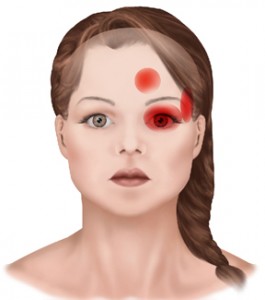Tension-Type Headaches and TAC Headaches
In my last post, I explained how to diagnose a migraine based on the International Headache Society criteria. This post will focus on two other categories of primary headaches that I treat at my headache and chronic head and neck pain practice in Beverly Hills, CA. The two are tension type headaches, and the trigeminal autonomic cephalgias, which is a very fancy term that describes several headaches that I will explain below.
Tension-type Headaches
Tension-type headaches are the most common type of primary headache known to man. Primary headaches are headaches without any other cause such as a tumor, a stroke, head trauma, etc. The diagnosis of a tension-type headache is based on the follow criteria:
- The headache lasts between 30 minutes and one week.
- The headahces has two of the following four criteria:
- bilateral location
- Pressing/tightening (non-pulsating) quality
- Mild or moderate intensity
- Not aggravated by routine physical activity such as walking or climbing stairs
- And both of the following:
- It can have either photophobia (light sensitivity) or phonophobia (sound sensitivity) but not both.
- No nausea or vomiting.
If the criteria above is met, then a diagnosis of tension-type headache is made.
Trigeminal Autonomic Cephalgias
Three are four headaches in this category. All are one-sided headaches, which have autonomic involvement. The autonomic nervous system is the type of reaction that humans cannot typically control such as heart rate, respiratory rate, digestion, salivation, perspiration, pupillary dilation, urination, and sexual arousal. When it comes to the trigeminal autonomic cephalgias, the signs that occur are eye redness, eye tearing, runny nose, droopy eyelid, nasal congestion, and forehead and facial sweating on only one side of the face.
Cluster Headache
The diagnosis of a cluster headache is based on the following criteria:
- A history of at least 5 attacks
- Severe or very severe unilateral orbital, supraorbital and/or temporal pain lasting 15-180 minutes if untreated
- Headache is accompanied by at least one of the following:
- Same side eye redness and/or tearing
- Same side nasal congestion and/or stuffy nose
- Same side eyelid swelling
- Same side forehead and facial sweating
- Same side constriction of the pupil and/or droopy eyelid
- Sense of restlessness or agitation
- The attacks have a frequency from one every other day to eight per day.
- The headache is not attributed to another disorder.
Paroxysmal Hemicrania
The attacks of paroxysmal hemicrania are similar in characteristics of pain and associated symptoms and signs to those of cluster headache, but they are shorter-lasting, more frequent, occur more commonly in females and respond absolutely to indomethacin, which is a non-steroidal anti-inflammatory medication in the same class as aspirin.
The diagnosis of a paroxysmal hemicrania is based on the following criteria:
- At least 20 attacks fulfilling criteria 2-4
- The attacks of severe same side orbital, supraorbital (above the eye) or temporal pain (pain in the temples) lasting between two to thirty minutes.
- Headache is accompanied by at least one of the following, which must occur on the same side as the headache:
- Same side eye redness and/or tearing
- nasal congestion and/or stuffy nose
- eyelid swelling
- forehead and facial sweating
- constriction of the pupil and/or droopy eyelid
- The attacks have a frequency above 5 per day for more than half of the time although periods with lower frequency may occur
- The attacks are prevented completely by therapeutic doses of indomethacin.
- The headache is not attributed to another disorder.
SUNCT
SUNCT is an acronym that stands for “Short-lasting unilateral neuralgiform headache attacks with conjunctival injection and tearing.” This headache is very rare and is characterized by short-lasting attacks of same-sided pain that are much briefer than those seen in any other trigeminal autonomic cephalgias, and very often accompanied by prominent eye tearing and redness of the eye on the same side as the headache.
The diagnosis of a paroxysmal hemicrania is based on the following criteria:
- At least 20 attacks fulfilling criteria 2-4
- Attacks of unilateral orbital, supraorbital (above the eye), or temporal stabbing or pulsating pain lasting 5-240 seconds
- Pain is accompanied by same side eye redness and/or tearing
- The attacks occur with a frequency from 3 to 200 per day.
- The headache is not attributed to another disorder.
Hemicrania Continua
This headache is persistent strictly one-sided headache responsive to indomethacin, which is a non-steroidal anti-inflammatory medication in the same class as aspirin.
The diagnosis of a hemicrania hemicrania is based on the following criteria:
- A headache for greater than 3 months fulfilling criteria 2-4
- All of the following characteristics:
- same-sided pain without changing sides
- daily and continuous, without pain-free periods
- moderate intensity, but with exacerbations of severe pain
- At least one of the following autonomic features occurs during exacerbations and on the same side of pain:
- redness and/or tearing
- nasal congestion and/or stuffy nose
- constriction of the pupil and/or droopy eyelid
- Complete response to therapeutic doses of indomethacin
- Not attributed to another disorder
Next weeks post will discuss the fourth category of primary headaches, which are the Other Primary Headaches, and the following week I will start to discuss the different ways to treat all of the primary headaches.
Respectfully,
Rich Hirschinger, DDS, MBA
Diplomate, American Board of Orofacial Pain
Member American Academy of Orofacial Pain
Lecturer, UCLA Orofacial Pain and Dental Sleep Medicine
www.LoveOFP.com
888.981.8981










